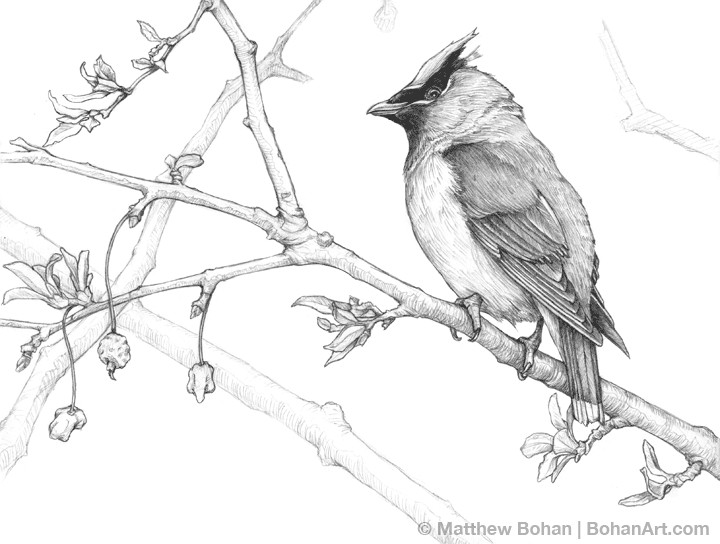
It’s easy for people who don’t spend much time in nature to overlook something as spectacular as a Cedar Waxwing. They are small, mostly brown birds, and from a distance there isn’t much that grabs your attention. Often it’s their high-pitched, almost ultrasonic call that gives them away. Honestly, the only flashy things about them are a few well-placed, bright patches of color and a small crest. For the Cedar Waxwing it’s all about subtle beauty. Once you get a pair of binoculars on one, it transforms into one of the most beautiful birds you could imagine.
Their feathers seem to be the finest, smoothest structures around, giving them an airbrushed appearance, with perfect gradients of tan fading to grays, yellows and whites. Their eyes are somewhat hidden within a jet-black, bandit mask sporting a fringe of white. Yellow feather tips form a beautiful arc along the tail. Among those that have eaten a lot of berries from Eurasian Honeysuckle, an invasive plant, the tail’s fringe can take on an orange hue. The icing on the cake is the bright red, waxy tips of the secondary fight feathers. The purpose of these beautiful structures may not be known with any certainty, but they sure are pretty. Not surprisingly, it turns out that they aren’t just appealing to humans. Studies have shown that female birds prefer mates with more developed waxy tips.
We are lucky to have a large number of viburnum bushes next to our garage. Though the Cedar Waxwings ignore them most of the year, every April they descend upon these “highbush cranberries” to feast after all of the other berries in the area have been harvested. On these occasions I often remove the glass from the garage window, set up the 400mm lens and tripod, and take dozens of photos of the birds only about 8 feet away.
I’ve had the pleasure of finding two Cedar Waxwing nests over the years. They are beautiful structures about 5 inches across with a host of materials woven together.
Occasionally seen hawking insects to eat, Cedar Waxwings almost exclusively eat fruit. Although the Brown-headed Cowbird, a brood parasite, will dump its eggs in waxwing nests, the young seldom survive because they can’t subsist on a high fruit diet. A similar thing happens when the Brown-headed Cowbird parasitizes American Goldfinches. They just can’t make it on a diet of thistle seeds.
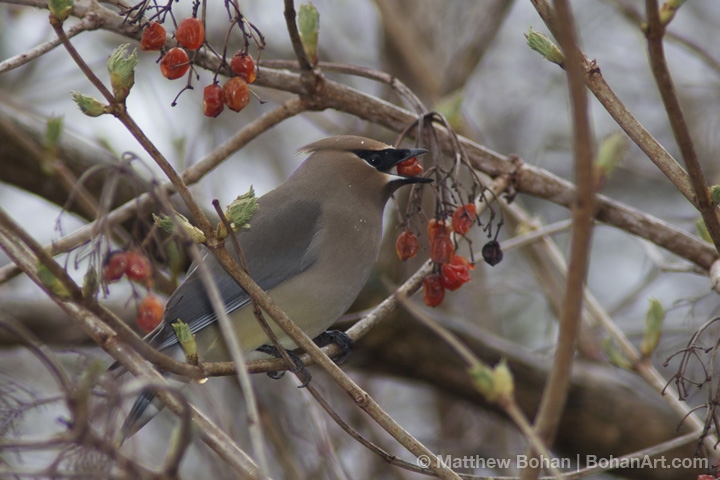
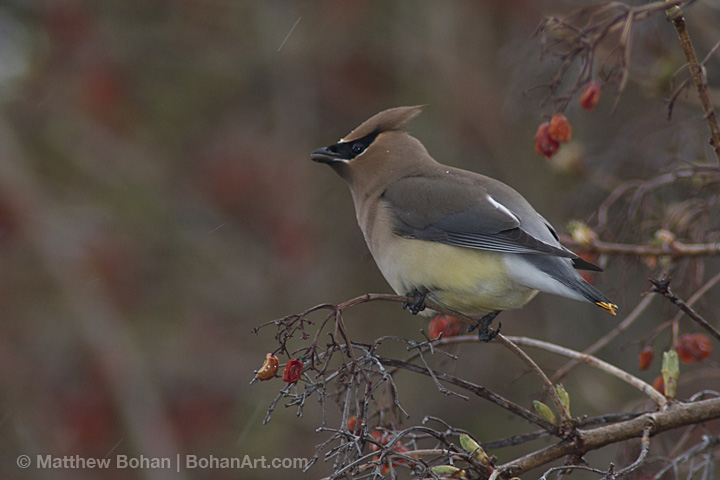
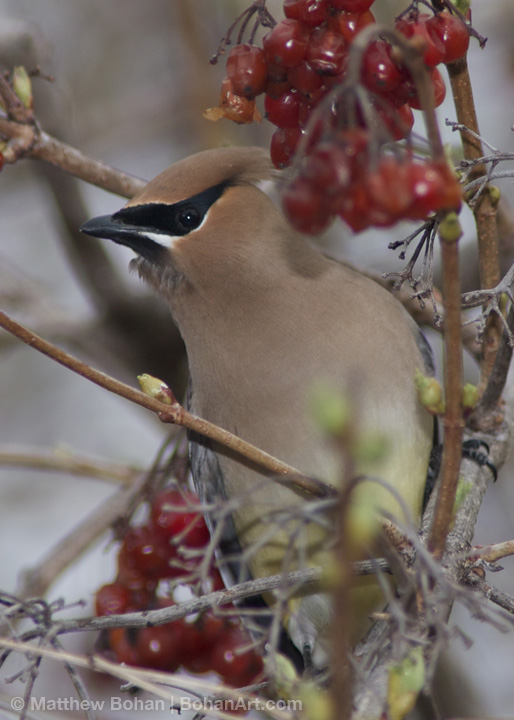
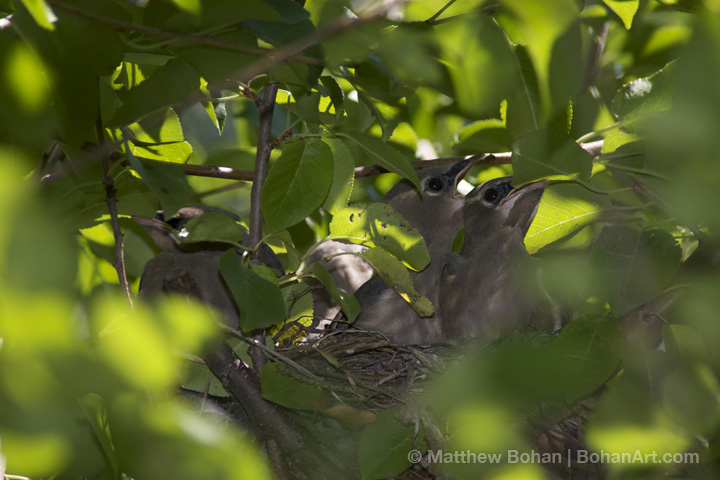

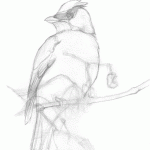
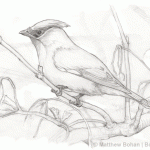
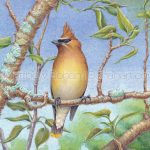
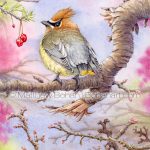
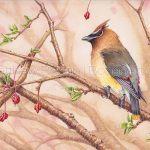
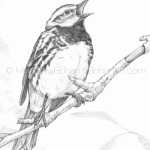
Leave a Reply